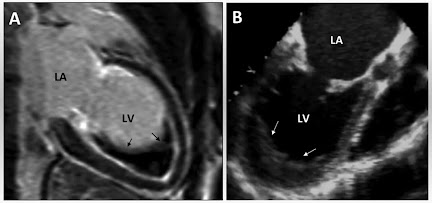Bronchopneumonia (Lobular Pneumonia)
Definition : Lobular pneumonia is the infection of the terminal bronchioles that extends into the surrounding alveoli resulting in patchy consolidation of the lung. Founds in extreme of ages ( infants and old age).
Etiology : The common organism that responsible for bronchopneumonia is -
1. Staphylococci
2. Streptococci
3. Pneumococci
4. Klebsiella pneumoniae
5. Haemophilus influenzae
6. Gran-negative bacilli ( pseudomonas and caliform bacteria ).
MORPHOLOGICAL FEATURES :
Grossly : Lobular pneumonia is identified by patchy areas of red and grey consolidation at the affected part. Frequently found bilaterally and more common in lower zone of the lungs. Cut surface shows patchy, consolidated lesions are dry, granular, firm, red or grey in color, 3-4 cm in diameter, slightly elevated over the surface and are commonly centred around a bronchiole.
Histologically :
i. Acute bronchiolitis.
ii. Suppurative exudate, consisting specially neutrophils in the peribronchiolar alveoli.
iii. Thickening of the alveolar septa by congested capillaries and leucocytic infiltration.
iv. Less involved alveoli contain oedema fluid.
Features
Lobar Pneumonia
Lobular Pneumonia
Interstitial Pneumonia
Definition
It is an acute bacterial infection
of a part of lobe or entire lobe or even two lobes of one or both the lungs.
It is the infection of terminal
bronchioles that extend into the surrounding alveoli resulting in patchy
consolidation of lung.
It is characterized by patchy
inflammatory changes generally confined to interstitial tissue without any
alveolar exudates.
Etiology
Pneumococci, Staphylococcal pneumonia.
Staphylococci, Streptococci etc.
Respiratory Syncytial Virus (RSV), Mycoplasma pneumoniae.
Morphology
Stage of congestion (1-2 days),
Patchy consolidation with central
granularity, alveolar exudate, thickened septa.
Patchy to massive and widespread
consolidation of one or both the lungs.
Clinical features
Shaking, Chills, Fever, Malaise, Chest pain, Dyspnoea,
Tachycardia, Tachypnoea and Cyanosis.
Shaking, Chills, Fever, Malaise, Chest pain, Dyspnoea,
Tachycardia, Tachypnoea and Cyanosis, Mottled patches lung in X-rays.
Initially – Fever, Headache, Muscles pain.
Complications
Organisation, Pleural effusion,
Empyema, Lung abscess, Metastatic infection.
Organisation, Pleural effusion,
Lung abscess, Empyema.
Interstitial fibrosis and
permanent damage.
COMPLICATIONS : Resolution of bronchopneumonia is uncommon. There is generally some amount of bronchioles are destructed resulting in foci of bronchiolar fibrosis that may cause bronchiectasis, pleural effusion, empyema, lung abscess and organisation.
CLINICAL FEATURES : Lobular pneumonia are common in infants or elder age persons.
i. There may be history of preceding bedridden illness, chronic debility (weakness), flu, measles, aspiration of gastric contents or upper respiratory infection.
ii. There is initial (2-3 days) appearance of features of acute bronchitis.
iii. Blood examination usually shows neutrophilic leucocytosis.
iv. Chest X-rays shows mottled, focal opacity (lack transparency) in both the lungs, specially in the lower zones.
Histologically :
i. Acute bronchiolitis.
ii. Suppurative exudate, consisting specially neutrophils in the peribronchiolar alveoli.
iii. Thickening of the alveolar septa by congested capillaries and leucocytic infiltration.
iv. Less involved alveoli contain oedema fluid.
|
Features
|
Lobar Pneumonia
|
Lobular Pneumonia
|
Interstitial Pneumonia
|
|
Definition
|
It is an acute bacterial infection
of a part of lobe or entire lobe or even two lobes of one or both the lungs.
|
It is the infection of terminal
bronchioles that extend into the surrounding alveoli resulting in patchy
consolidation of lung.
|
It is characterized by patchy
inflammatory changes generally confined to interstitial tissue without any
alveolar exudates.
|
|
Etiology
|
Pneumococci, Staphylococcal pneumonia.
|
Staphylococci, Streptococci etc.
|
Respiratory Syncytial Virus (RSV), Mycoplasma pneumoniae.
|
|
Morphology
|
Stage of congestion (1-2 days),
Red hepatisation (2-4 days),
Grey hepatisation (4-8 days),
Resolution (8-9 days)
|
Patchy consolidation with central
granularity, alveolar exudate, thickened septa.
|
Patchy to massive and widespread
consolidation of one or both the lungs.
|
|
Clinical features
|
Shaking, Chills, Fever, Malaise, Chest pain, Dyspnoea,
Tachycardia, Tachypnoea and Cyanosis.
|
Shaking, Chills, Fever, Malaise, Chest pain, Dyspnoea,
Tachycardia, Tachypnoea and Cyanosis, Mottled patches lung in X-rays.
|
Initially – Fever, Headache, Muscles pain.
Later – Dry, Hacking, Cough with retrosternal burning.
|
|
Complications
|
Organisation, Pleural effusion,
Empyema, Lung abscess, Metastatic infection.
|
Organisation, Pleural effusion,
Lung abscess, Empyema.
|
Interstitial fibrosis and
permanent damage.
|
COMPLICATIONS : Resolution of bronchopneumonia is uncommon. There is generally some amount of bronchioles are destructed resulting in foci of bronchiolar fibrosis that may cause bronchiectasis, pleural effusion, empyema, lung abscess and organisation.
CLINICAL FEATURES : Lobular pneumonia are common in infants or elder age persons.
i. There may be history of preceding bedridden illness, chronic debility (weakness), flu, measles, aspiration of gastric contents or upper respiratory infection.
ii. There is initial (2-3 days) appearance of features of acute bronchitis.
iii. Blood examination usually shows neutrophilic leucocytosis.
iv. Chest X-rays shows mottled, focal opacity (lack transparency) in both the lungs, specially in the lower zones.






No comments:
Post a Comment
Please do not enter any spam link in the comment box